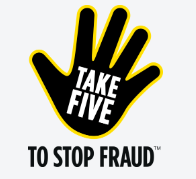Whether it’s £10 or £10,000 avoid scams and fraud – and keep your money safe.
on this page
Spot the warning signs
Check these 3 things before you move any money.
Does it feel urgent? If someone's trying to panic you into sending money, it's a scam. Even if it's someone you know, double-check.
Is it a great offer? If an offer seems too good to be true, be suspicious.
Are you sure it’s genuine? Each time you spend money online, ask yourself ‘Could this be a scam?
Something doesn’t feel right? Contact us straight away.
How do I know it’s really TSB phoning me?
- If someone calls saying your money’s not safe and tells you to move it into a ‘safe’ bank account, it’s a scam.
- If anyone calls asking for your PIN, it's a scam. TSB will never ask you for your PIN.
- If you get a call asking for your full Password or memorable information, it’s a scam.
- If you call us, we may ask you for certain characters from your memorable information to verify your identity
Think it's a fake call?
- If in doubt, end the call and Contact us straight away.
How do I know it’s a genuine email from TSB?
- We will always greet you personally with your name.
- We’ll always include the last 4 digits of your TSB current account number or...
- The last 4 digits of your other TSB product account number or…
- The last 3 digits of your postcode
- Our email addresses end in ‘tsb.co.uk’
Think it’s a fake email?
Don’t reply or click on anything – forward the details to emailscams@tsb.co.uk and we’ll take it from there.
How do I know it’s a genuine text message from TSB?
- Scam texts often have spelling and grammar mistakes.
- Watch out for links as they could take you to a website that will steal your details.
Watch this government video on how to spot a fake text message.
Think it’s a fake message?
Don’t reply or click on anything. Forward the text message to 7726 to report it to Ofcom as a scam.
How do I know I'm logging on to the real TSB website?
- Only use the official TSB website to log in https://www.tsb.co.uk We have ‘https:' at the beginning, which means it’s a secure site you’re visiting.
- Bookmark the official TSB website login page in your browser so you know it's always the right link.
Turn on pop-up blockers in your browser.

Think you can spot a scam?
Try this quiz from the Take Five campaign.

Money Mules
What you need to know.

